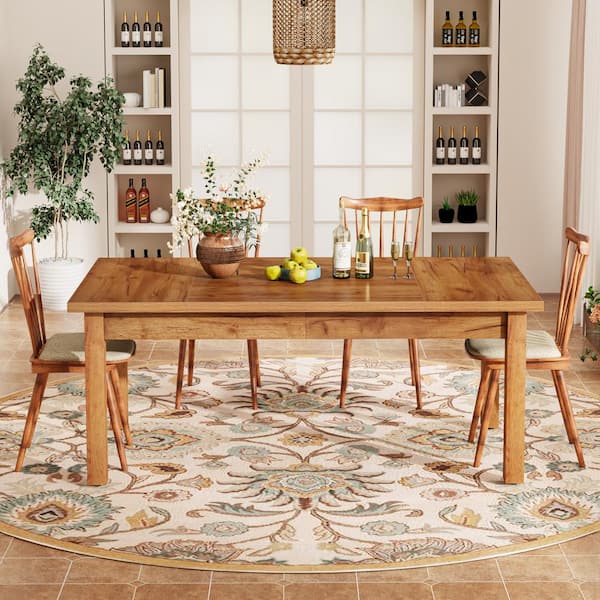One-of-a-kind Dining Room Table Legs to Transform Your Eating Area
One-of-a-kind Dining Room Table Legs to Transform Your Eating Area
Blog Article
An In-depth Check Out Dining Table Leg Styles: Discovering the Suitable Suit
Selecting the right dining table leg style is critical for both visual charm and functional performance. Typical 4 legs supply ageless sophistication and stability, while the stand base offers increased legroom and a contemporary look. For those with larger tables, trestle legs ensure durable assistance, whereas barrette legs introduce a mid-century modern-day ambiance with their minimalist style. The x-shaped legs mix contemporary style with enhanced stability. Each of these choices brings one-of-a-kind advantages, making the selection greater than simply a matter of preference. Explore additionally to uncover which design perfectly enhances your dining room and way of living.
Typical 4 Legs
Amongst the different types of dining table leg styles, the typical four-leg style continues to be a classic selection for lots of families. This traditional configuration supplies a harmonious blend of performance and looks, making it a perennial favorite. Four legs provide balanced support, guaranteeing the table continues to be stable and efficient in birthing considerable weight. This is especially helpful for homes that regularly organize large events or use their table for numerous purposes, such as work or crafting.
From an aesthetic point of view, the typical four-leg style can be easily adjusted to numerous interior styles. Whether crafted from wood, metal, or a combination of materials, these legs can be delicately carved, smooth and minimalistic, or anything in between. Their convenience enables them to match both rustic and contemporary setups effortlessly.
In addition, the simple structure of the four-leg design helps with convenience of activity and positioning within an area. Unlike more complex bases, this design minimizes blockages, giving sufficient legroom for diners. In recap, the typical four-leg dining table leg style weds enduring beauty with sensible performance, making it a sharp selection for those looking for both type and feature in their eating furniture.
Pedestal Base
Often commemorated for its sophisticated and space-efficient layout, the stand base is a prominent option to the typical four-leg configuration in eating table leg styles. This distinct base usually features a solitary central column supporting the tabletop, which can differ in kind, from ornately carved wood to streamlined, modern-day metal. One of the primary advantages of the pedestal base is its capability to make the most of legroom and seating versatility. Without edge legs, restaurants are paid for greater freedom of activity, making it an excellent choice for round and oval tables that promote even more intimate and inclusive celebrations.
Furthermore, the stand base's central support can handle considerable weight, enabling making use of heavier tabletops, such as marble or thick hardwood. This toughness paired with its visual convenience makes the stand base a prominent option in both conventional and contemporary indoor settings. It can flawlessly incorporate with numerous style motifs, from timeless elegance to minimal modernity. Additionally, the main column itself uses a canvas for detailed designs and artistic expressions, adding an aspect of aesthetic interest underneath the table. In recap, the stand base combines performance snappy, making it a fine-tuned and functional choice for varied dining settings.
Trestle Legs
Trestle legs offer a robust and timeless foundation for dining tables, defined by their straight cross-bracing and durable support beams. Originating from medieval times, this style has advanced yet maintained its vital framework, making it a seasonal fave in both traditional and modern settings. The central trestle beam of Get More Information light, usually sustained by 2 or more vertical messages, uses outstanding stability, permitting larger table sizes without the need for added legs.
A substantial advantage of trestle leg tables is the enough legroom they provide. Unlike tables with four edge legs, the lack of blockages at the table's edges supplies unobstructed space for chairs and diners, improving convenience and access. This makes trestle tables ideal for accommodating bigger celebrations, whether in a dining-room or a banquet hall.
From rustic farmhouse to streamlined modern-day styles, trestle legs can be personalized to fit specific tastes. Their long-lasting appeal and useful discover here benefits make trestle legs an engaging selection for those seeking both design and practicality in their eating table.
Hairpin Legs

The allure of hairpin legs hinges on their simpleness and flexibility - dining room table legs. Available in an array of materials, including steel and brass, they can be finished in many shades to match different interior styles. Whether coupled with a rustic wood table top or a contemporary glass surface, hairpin legs easily blend performance with a touch of vintage beauty
Resilience is another noteworthy function of barrette legs. Despite their fragile look, these legs are engineered to birth substantial weight, guaranteeing the eating table remains secure and secure. Furthermore, they are fairly simple to mount, making them a preferred option for do it yourself fanatics and expert furniture manufacturers alike.
X-Shaped Legs

Constructed from materials such as steel, wood, or a mix of both, X-shaped legs can be tailored to match various layout choices. Steel legs usually provide a streamlined and commercial feeling, ideal for loft-style houses and modern eating areas. On the various other hand, wood X-shaped legs offer a warmer, more rustic charm, ideal for farmhouse or diverse insides. The adaptability in products permits property owners to customize their table to much better fit their general style system.
Furthermore, the design behind X-shaped legs makes sure even weight circulation, reducing the risk of tottering and improving resilience. This makes them especially fit for bigger table that call for additional assistance. Essentially, X-shaped legs mix sensible engineering with contemporary visual appeals, making them a classic choice for varied dining settings.
Conclusion
A thorough understanding of dining table leg styles discloses the distinctive qualities and benefits of each style. Trestle legs ensure durable support for bigger tables, and barrette legs introduce a mid-century modern-day aesthetic.
Report this page